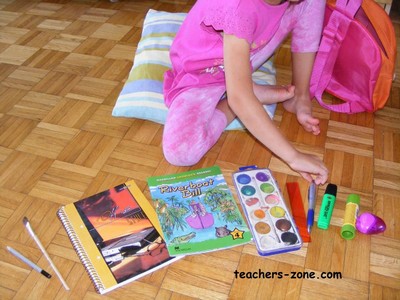Learning Styles in ESL Classroom
by Anna Sawa
Every student in EFL classroom learns in a unique way. Learning style means that different people receive and process information differently. The basic types of learning are visual, auditory and kinesthetic. However, every student may have a combination of learning styles and strategies or only one dominant way of foreign language assimilation.

Teachers should focus on identifying learning styles of their students to adjust teaching strategies and techniques that are best for their students’ learning preferences. How recognize the learning styles? What teaching methods and activities should teachers use? Here are some teaching tips to help students learn more quickly and effectively.
Visual learners
A visual learner is someone who remembers written information and pictures. They learn best by using posters, maps, charts, real objects and other visual aids. Students who prefer this learning style often recognize words by sight and take notes to organize their thoughts even when they have printed material. During a lesson they look at the teacher intently. Learning a foreign language they highlight new words and phrases in contrasting colours. They like making flashcards to memorize new lexical items and use sticky notes containing key phrases and attach them in clearly visible places.
Teachers who have visual learners in EFL classroom should use flashcards, illustrations and photos. They should use different colours of chalk or markers and underline the most important information. The classroom should be decorated with posters, maps and other visual aids. Encourage these students to take notes, highlight key words and make picture dictionaries.
Auditory learners
Auditory learners process information best when they can hear it. They are great in following verbal instructions rather than written directions. Auditory learners benefit from lectures and readily participate in discussions. They prefer gather information presented through speech over long texts to read. In the classroom they listen to the teacher intently, but they can get easily distracted by what they can hear around (ex. talking classmates or outside sounds). This type of student is usually very social and talkative so he does not afraid to speak in public. These students would willingly prepare a dialogue, a short performance or a presentation.
Teachers who have auditory learnes in EFL classroom should call on them to summarise or paraphrase what they have heard or answer questions. Introduce songs and chants to practise vocabulary and whole chunks of the language. Put their social skills to good use with creating lesson plans which include group work and collaboration.
Kinaesthetic learners
Kinaesthetic learners retain information best when they are doing something or manipulating objects in the same time. They need to be physically engaged in the learning process. A kinaesthetic learner walks around and moves while he tries to learn something by heart. They are usually full of energy, vigorous and do a lot of sport. They have great hand-eye coordination and high level of motor skills. They can be distracted by sitting still and just listening without any additional activities.
Teachers working with kinaesthetic learners in EFL classroom should let them do notes or just doodle during lectures. Creating lesson plans you need to include lots of physical activities and games to facilitate memorization. Use teaching materials your students can manipulate such as blocks, puzzles or board games. Encourage your kinaesthetic learners to prepare presentations or performances and combine study sessions with some movement.
In fact, teaching in EFL classroom you meet all of these students presented above at the same place and time. That could be a challenge. The only thing you can do is diversify teaching materials and strategies. Teachers should take into account all of the needs and learning styles to prepare a beneficial and effective lesson plan. That is why you should visualise teaching material, present a good model of spoken language and put what you teach into practise during every single lesson.